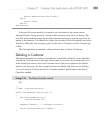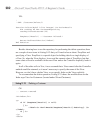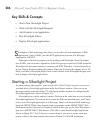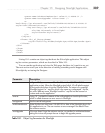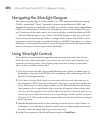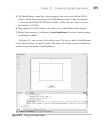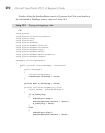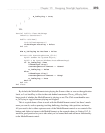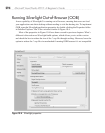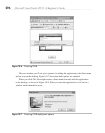
Chapter 10: Designing Silverlight Applications 289
<param name="minRuntimeVersion" value="3.0.40818.0" />
<param name="autoUpgrade" value="true" />
<a
href="http://go.microsoft.com/fwlink/?LinkID=149156&v=3.0.40818.0"
style="text-decoration:none">
<img src="http://go.microsoft.com/fwlink/?LinkId=161376"
alt="Get Microsoft Silverlight"
style="border-style:none"/>
</a>
</object>
<iframe id="_sl_historyFrame"
style="visibility:hidden;height:0px;width:0px;border:0px">
</iframe>
</div>
</form>
</body>
</html>
Listing 10-1 contains an object tag that hosts the Silverlight application. This object
tag has various parameters, which are described in Table 10-1.
You can run the application and view the Web page, but there isn’t much to see yet.
The next section starts you in the direction of making something useful happen with
Silverlight by reviewing the Designer.
Table 10-1 Object Tag Parameters for Silverlight
Parameter Description
source In Figure 10-2, you can see a ClientBin folder in the ASP.NET MVC Web
application project. When the Silverlight project builds, VS will take the output
of that project and place it into the ClientBin folder. The output of a compiled
Silverlight project is a *.xap file, which is the same as a compressed *.zip file,
but with a different name. Silverlight loads the *.xap file into the browser at
runtime and runs the application.
onerror Listing 10-1 omitted the contents of the onSilverlightError JavaScript function,
which is called whenever an error occurs in Silverlight.
background Sets the control background.
minRuntimeVersion States that the user must have v3.0.40818.0 or later of the Silverlight plug-in for
this application to run. The user receives an error message if she doesn’t have
the minimum version.
autoUpgrade If the user doesn’t have the minimum version, as specified in minRuntimeVersion,
setting this to true will prompt the user to begin the upgrade process.



